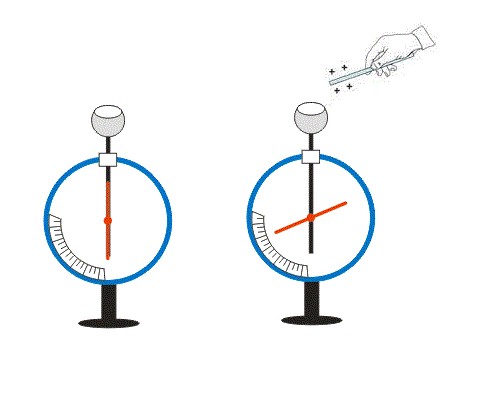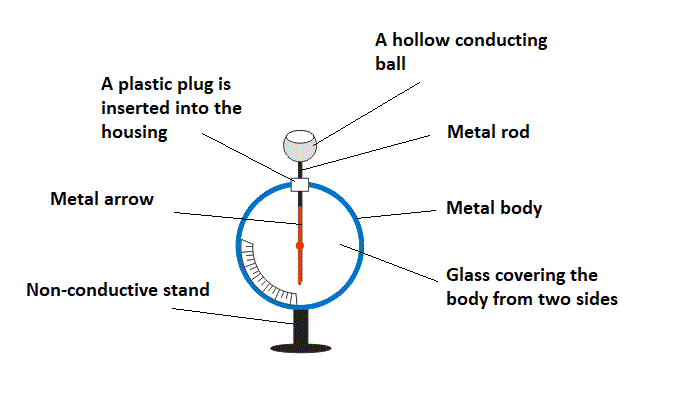Electrometer is a device used for measuring electric charge or potential.
Electrometers can be used to measure both static and varying electric fields. One of the most common applications of electrometers is the investigation of physical properties of materials related to electric fields, such as conductivity, dielectric permittivity, and so on.
The simplest electrometers, constructed in the 18th century, were graduated electroscope. Electroscopes detect the presence of charge on an object and allow a very rough estimation of its potential. More precise electrometers enable the determination of potential in accepted units.
Construction of an Electrometer
Electrometer Working Principle
Let’s touch a positively charged rod to the electrometer’s rod. The electrometer’s needle will deflect by a certain angle. The rotation of the needle is explained by the fact that when a charged object touches the electrometer’s rod, electric charges distribute along the needle and the rod. Repulsive forces acting between like electric charges on the rod and the needle cause the needle’s deflection. Let’s electrify the ebonite rod again and touch the electrometer’s rod with it once more. Experience shows that with an increase in the electric charge on the rod, the angle of the needle’s deflection from the vertical position also increases. Therefore, by the angle of the electrometer’s needle deflection, one can draw conclusions about the value of the electric charge transferred to the electrometer’s rod.

Modern electrometers are essentially highly sensitive voltmeters with a very high input resistance of 1014 ohms.
In general, electrometers are essential tools for measuring electric fields and charges in many fields of science and technology.
